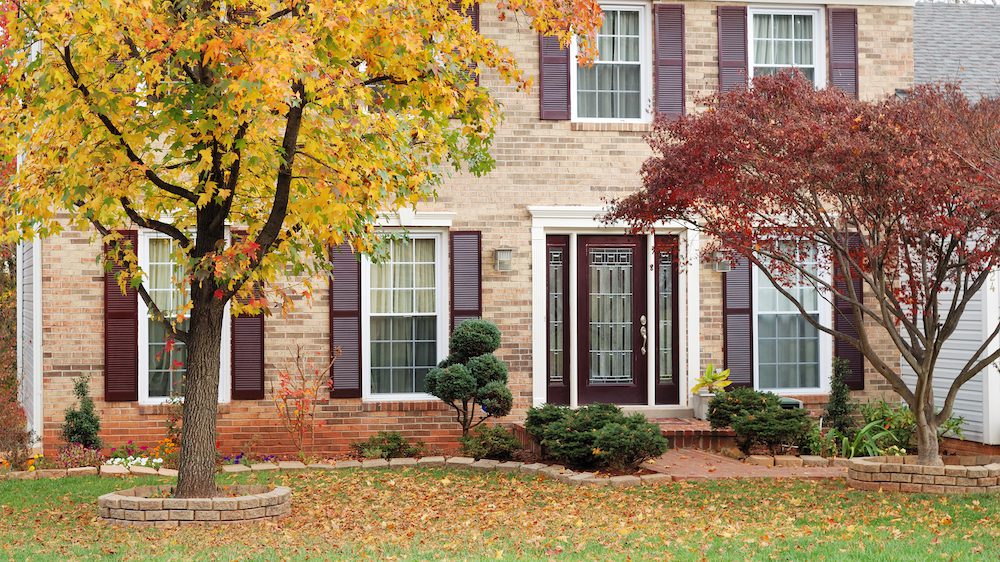
Getty Images
Any tree hugger worth her bark knows that trees help the environment by supplying oxygen, improving air quality, conserving water, stabilizing the soil, and providing a habitat for wildlife. And let’s not forget that they also provide shade and beautify our homes.
But did you know that healthy, mature trees on your property can directly affect your property’s long-term value, too? Here’s why.
Do trees affect property value?
The visual appeal of trees is unmistakeable—beautiful landscaping attracts buyers. Research has shown that planting large trees can increase property values anywhere from 3% to 15%, according to the Arbor Day Foundation.
“Trees are often a key factor considered when property appraisers are determining the value of homes,” says Kathy Glassey, director of renewable services for Monster Tree Service.
Having many trees around your property can save energy and lower your bills, too.
“In warmer months, cooling costs tend to be lower in buildings with ample tree shade. In colder months, heating costs are reduced, given the protection from wind that trees provide,” says Glassey.
Can cutting down a tree increase property value?
Removing dying or hazardous trees can increase property value, experts say.
“This mostly depends on the health of the tree. If a tree is in poor health or is a potential hazard, removing it could help maintain the value of the property,” says Glassey.
Dying trees present the very real risk of potentially falling and damaging the property, she adds.
“Likewise, trees in poor locations, like trees with branches that hang over the top of the home, present risks of damaging the roof when branches fall,” she says. “Trees with expansive root systems that are too close to the house can damage the foundation if root systems break through them.”
Best trees to add value to your home
To increase a home’s value, Glassey says, the best types of trees to plant are ones that are resilient, have suitable root crowns, are low maintenance, and look great.
“The types of trees you plant depend on which work best for your specific location, but a few trees that we recommend are maples, ornamentals, oaks, hickories, and elm trees,” says Glassey.
Kevin Belter, president and consulting arborist for Arbor Care & Consulting in Texas, says there are many native trees to consider depending on where a person lives. He recommends visiting local parks and downloading plant ID apps (e.g., PictureThis or iNaturalist) for your phone.
Types of trees to avoid
Most trees are beneficial to a home, but there are some you should stay away from.
“This includes non-native tree species like black locusts and box elders,” says Glassey. “Additionally, it’s best to avoid trees that typically attract invasive pest species or disease, and require significant maintenance.”
One of the keys is to know the location “and finding which trees will thrive best in the particular state and climate specified,” says Vaidehi Desai, PR coordinator for the Arbor Day Foundation, a nonprofit conservation and education organization.
The foundation developed the U.S. Hardiness Zone Map based on 5,000 National Climatic Data Center cooperative stations across the continental United States. This plant hardiness zone map is the standard used to determined what types of plants and trees can survive and thrive in any given location.
Choosing the right trees for your home
Selecting the right trees for your property requires understanding your local ecosystem and tree species native to your region. But it also comes down to the look you want to achieve in your landscape design.
Belter says to consider these questions: “Is this tree self-pruning? Will it grow over my roof and drop large branches onto my roof like pecans and sycamores do? Or will it drop huge acorns that will dent cars and crack windshields like a burr oak when it reaches mature size/height?”
Above all, though, location and climate will always play the most significant factor in determining what tree can be planted for a home. To start, homeowners should first look up their home’s hardiness zone to see which trees will thrive best in the specified location. That will help you narrow down the list of trees you can plant.
“It is always best to consult with an expert arborist to help you determine which trees are best for your property,” says Glassey.
The post Branch Out! How Trees Can Affect the Value of a Home appeared first on Real Estate News & Insights | realtor.com®.
No comments:
Post a Comment